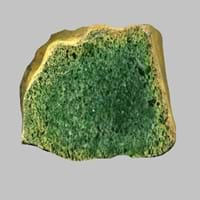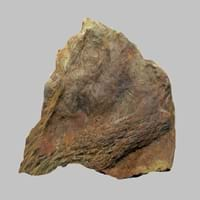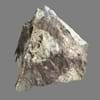Definition
Jadeitite is a metamorphic rock usually found in blueschist grade metamorphic terrains
Siltstone can be defined as a fine-grained sedimentary rock which mainly consists of consolidated silt
Discoverer
Unknown
Unknown
Etymology
From pyroxene mineral jadeite
From English word silt and stone and from Proto-Indo-European root sal and stainaz
Class
Metamorphic Rocks
Sedimentary Rocks
Sub-Class
Durable Rock, Medium Hardness Rock
Durable Rock, Hard Rock
Group
Not Applicable
Not Applicable
Other Categories
Fine Grained Rock, Opaque Rock
Fine Grained Rock, Opaque Rock
Color
Black, Brown, Colourless, Green, Grey, White
Brown, Red, Reddish Brown
Durability
Durable
Durable
Appearance
Rough and Dull
Rough
Interior Uses
Decorative Aggregates, Homes, Interior Decoration
Decorative Aggregates, Interior Decoration
Exterior Uses
Garden Decoration, Office Buildings, Paving Stone
As Building Stone, As Facing Stone, Garden Decoration
Other Architectural Uses
Curbing
Curbing
Construction Industry
As Dimension Stone, Cutting Tool, Knives
Building houses or walls, Cement Manufacture, Construction Aggregate, for Road Aggregate, Making natural cement, Raw material for the manufacture of mortar
Medical Industry
Not Yet Used
Not Yet Used
Antiquity Uses
Artifacts, Jewellery, Monuments, Sculpture
Artifacts, Sculpture, Small Figurines
Commercial Uses
Commemorative Tablets, Creating Artwork, Jewelry
Raw material for the manufacture of mortar, Soil Conditioner
Types
Not Available
Not Available
Features
Host Rock for Lead
Available in Lots of Colors and Patterns, Easily splits into thin plates, Generally rough to touch, High silica content, Very fine grained rock
Archaeological Significance
Monuments
Used
Not Yet Used
Famous Monuments
Data Not Available
Not Applicable
Famous Sculptures
Data Not Available
Data Not Available
Pictographs
Used
Not Used
Petroglyphs
Used
Not Used
Formation
Due to change in environmental conditions, rocks are heated and pressurized deep inside the Earth's surface. Jadeitite is formed from the extreme heat caused by magma or by the intense collisions and friction of tectonic plates.
Siltstone is a type of sedimentary rock which is formed from fine rock particles. As the particles of eroded rock travel along with water, the edges of the rock are worn-out by water into a rounded shape.
Mineral Content
Carbonate, Magnetite, Pyrrhotite, Serpentine, Sulfides
Calcite, Clay, Clay Minerals, Feldspar, Micas, Quartz, Sand, Silica, Silt
Compound Content
Ca, CaO, Carbon Dioxide, KCl, MgO, Sulfur Dioxide, Sulphur
Aluminium Oxide, CaO, Iron(III) Oxide, Potassium Oxide, MgO, Sodium Oxide, Silicon Dioxide
Types of Metamorphism
Cataclastic Metamorphism, Contact Metamorphism, Regional Metamorphism
Not Applicable
Types of Weathering
Not Applicable
Biological Weathering, Chemical Weathering, Mechanical Weathering
Types of Erosion
Coastal Erosion, Water Erosion, Wind Erosion
Chemical Erosion, Coastal Erosion, Glacier Erosion
Grain Size
Very fine-grained
Fine Grained
Fracture
Uneven
Conchoidal
Streak
White, Greenish White or Grey
White
Porosity
Less Porous
Highly Porous
Luster
Waxy and Dull
Dull
Compressive Strength
Not Available
Cleavage
Irregular
Not Available
Specific Gravity
2.79-3
2.54-2.73
Transparency
Opaque
Opaque
Density
2.5-3 g/cm3
2.6-2.7 g/cm3
Specific Heat Capacity
Not Available
Resistance
Heat Resistant, Water Resistant
Heat Resistant, Impact Resistant, Pressure Resistant, Water Resistant
Deposits in Eastern Continents
Asia
India, Saudi Arabia, Singapore, South Korea
China, India, Kazakhstan, Mongolia, Russia, Uzbekistan
Africa
Ethiopia, Western Africa
Namibia, Nigeria, South Africa
Europe
England, Georgia, Switzerland, United Kingdom
Austria, Denmark, Germany, Great Britain, Netherlands, Norway, Poland, Sweden, Switzerland, United Kingdom
Others
Not Yet Found
Greenland
Deposits in Western Continents
North America
Canada
Canada, USA
South America
Colombia
Brazil
Deposits in Oceania Continent
Australia
Central Australia, New South Wales, New Zealand, Western Australia
New South Wales, New Zealand










